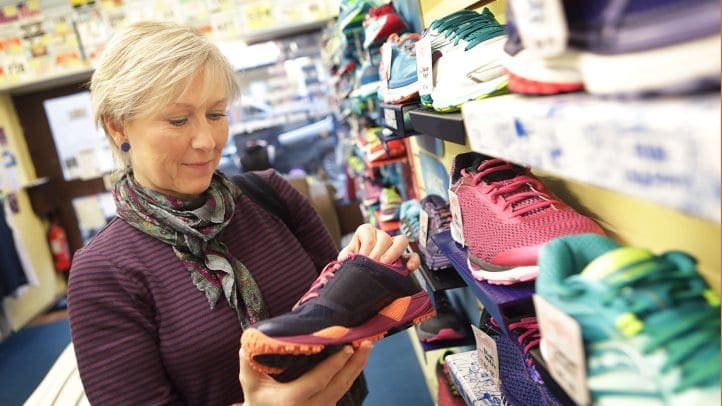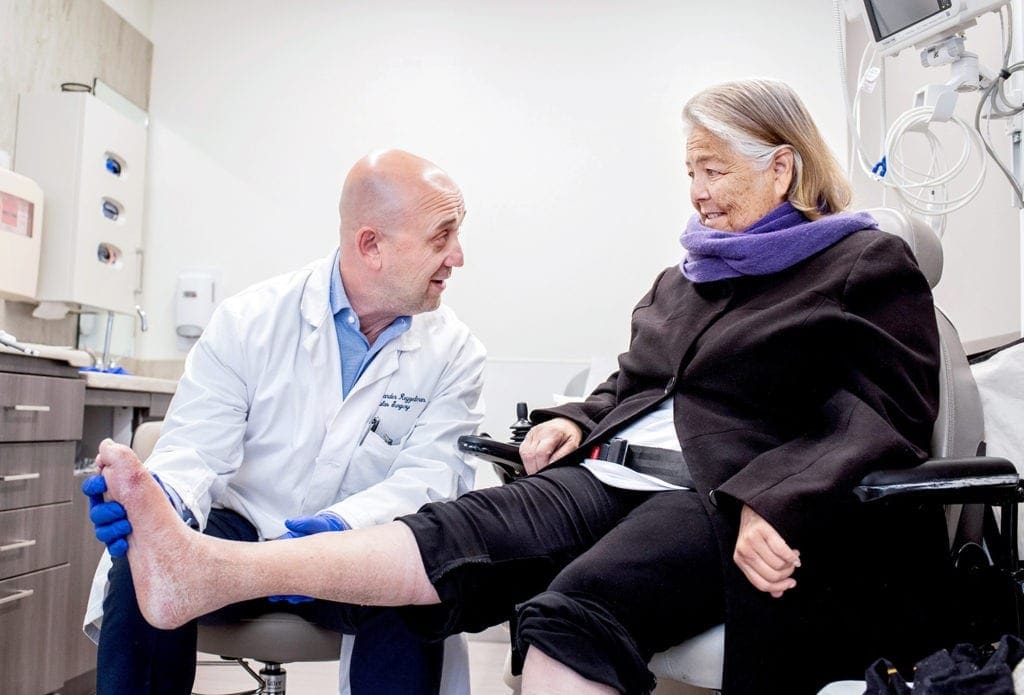
Whether you’ve gone to the doctor’s and they’ve encouraged you to look into the helpful traits of diabetic shoes or if you’re diving into some research yourself, this article helps outline some important aspects of these shoes and how they can help you with your Diabetic symptoms.
The Importance of the Health of Your Feet
Especially if you have diabetes, you will want to take extra care of your feet. The small and simple problem of an ulcer or callus can turn into something much more detrimental to your health—especially if you’ve lost the sense of feeling in your lower extremities.
It’s important to not only take preventative measures with your feet like buying special shoes but also doing a regular check-up for deformities or injuries to your feet and toes you might not have noticed before.

To help you avoid severe pain or an extreme surgery like amputation, look into the benefits of wearing diabetic shoes.
Other Options
If you don’t feel as comfortable jumping right into buying a whole new pair of shoes, you can also settle for diabetic insoles or socks, which can also help. This change can help give you another option to help you with your foot pain and keep your lower extremities as safe and healthy as possible. Diabetic insoles or socks work by supporting the legs and feet while you walk, as well as provide adequate blood flow—unlike other, restricting or constricting socks that might run a little too tight.
You will also definitely want to talk to your doctor about your options. It’s possible that insoles and socks won’t be the only solution. For example, you can also benefit from the combination of all three. These can definitely help you keep healthy legs and feet as you walk around.
If you’re not familiar with the advantages of each and what you possibly may need, you should try asking your doctor about what you need personally and what would be best for your diabetes.
The Dilemma: Walking with Diabetes
Although walking is a great option for cardio, to keep your heart and body healthy, it can actually be harmful to your feet and your legs if you live with diabetes. It can also be seen as a dilemma—trying to control your blood pressure but still staying healthy. However, wearing specially-made, diabetic shoes can help you with avoiding any possibility that your feet will be damaged or injured without you knowing about it.
What Makes Them So Special and the science behind Diabetic Shoes?
Diabetic shoes, insoles, and socks have special features that set them apart from the average footwear that can help you avoid injury and help with other diabetic symptoms. For example, they are specifically designed to offer extreme protection for your feet, especially when you are prone to having skin breakdown, poor circulation, neuropathy, and foot deformities.
The different, impactful shoe parts include:
- The Protective Interior: Designed with a softer material than your regular insole, the smooth interior is known to help prevent cuts or irritation of any kind.
- The Orthotic Support: Something that can be helpful not only for those with diabetes, a supportive interior and sole can also help with supporting the arch when you walk—giving you that loose and comfortable fit.
- The Lightweight Soles: With everything else going on, the last thing you would most likely need from a shoe is a heavy interior that you have to pick up over and over again. the lightweight nature of the sole and the shoe itself gives it much more mobility and functionality.
- The Width: People are all designed and built differently—and for each of their differences, they need widths that show that. Diabetic shoes are normally designed in a variety of different widths to help adhere to the fit of multiple people, which can help with protection.
- The Comfort: Diabetic shoes are designed with comfort in mind. From the extra-depth design, the deep toe-box, and the non-binding and stretchable uppers, soft and comfortable shoes are at the front of importance when it comes to shoe design.
Engineered and designed specifically with therapeutic features that can help accommodate the feet of a diabetic, these shoes are specially made to help provide comfort in uncomfortable situations.
For example, they help protect against irritation, enhance comfort, and are even adjustable and big enough to accommodate for swelling of the feet and lower legs, which happens quite often.
From a soft, seam-free interior to air pockets that help with support in every step, companies have truly put diabetic patients first when coming up with the various features of their design. Because these companies know that not only do patients with diabetes have special needs when it comes to footwear, they also know that there are unique people out there with unique feet, period.
Not only do these shoes accommodate specific diabetic problems, but they also help when a person has wide feet or flat arches. So, when all of these special needs are combined, finding a perfectly designed shoe to help with all the various issues and keep a person comfortable can be quite difficult. Diabetic shoes, insoles, and socks can be simple solutions for what may seem like complicated problems especially after you now know the science behind Diabetic Shoes.
Talk to Your Doctor, Today
Before going out and buying the first diabetic pair of shoes you see or trying to choose between insoles, socks or footwear, we recommend that you consult your doctor about your needs. Make sure that you let them know about any issues or pain you may already be having or feeling in order to best serve you and your needs.
However, at the end of the day, diabetic shoes can provide you with excellent protection for your feet—as well as support for your arches and lower legs. Talk to your doctor, today. They can not only let you know about specific sizes and features that can be tailored to your issues, but they also can help you choose which brand is best for you.

